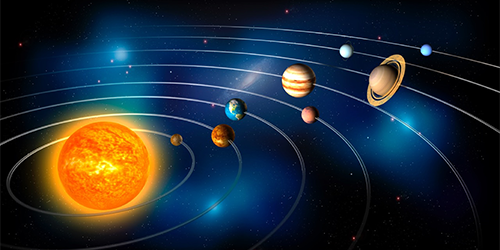Testing Relativity with Planetary Motion
Lorentz invariance is a central tenet of general relativity and the standard model of particle physics. It states that any two observers moving through space at a constant velocity share the same laws of physics, no matter their orientation and velocity. Any hint of breakdown of this spacetime symmetry could guide researchers in the search for a theory that unifies relativity and the standard model. Aurelien Hees from Rhodes University, South Africa, and colleagues report a test of Lorentz symmetry based on existing observations of the orbits of planets around the Sun. Their study indicates no breakdown of Lorentz invariance but places stringent constraints on it.
Lorentz symmetry can be tested using the so-called standard model extension (SME). This framework describes Lorentz symmetry for all known particles and forces, including gravity, in terms of coefficients that vanish when the symmetry holds exactly. Hees and colleagues determined SME coefficients using the observed shifts of two planetary orbital elements: the longitude of the ascending node (the point where a planet crosses the plane of Earth’s orbit from south to north), and the argument of the perihelion (the angle between the ascending node and the point of closest approach to the Sun). These shifts depend on other observables—such as a planet’s mean motion, orbital eccentricity and inclination—as well as on some of the SME coefficients. Therefore, they can be used to derive the values of the latter. The team found that these SME coefficients are zero to an accuracy on the order of parts per billion or less, improving current limits set by Solar System tests by ten- to a thousand-fold.
This research is published in Physical Review D
–Ana Lopes





